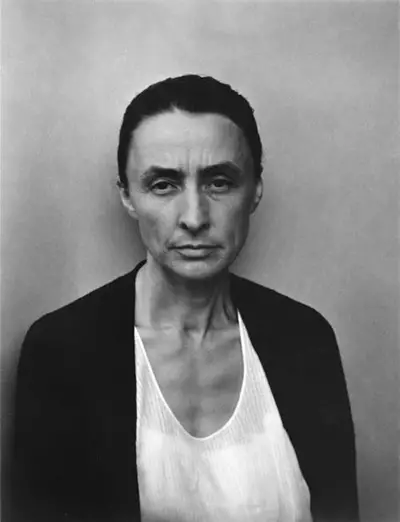She was one of seven children with parents who were dairy farmers.
She completed high school in Virginia and then studied at the School of Art Institute of Chicago. She then studied in New York, where she won a scholarship to study further at summer school.
However in 1908 she decided not to pursue a career as an artist, as she felt that she couldn't stand out in the style that had formed the basis of her training.
She had a four year hiatus, before returning to painting in 1912 when she attended a class at the University of Virginia.
Over the following few years she taught art, as well as developing her own style. In April of 1916 ten of her drawings were featured in an exhibition in New York, and a year later she had her first solo show at the same gallery.
By the mid 1920's she was known as one of the most important American artists.
This was around the time that she started doing large scale paintings of natural forms, starting with Petunia which she completed in 1924 and was exhibited in 1925.
This was also the time that she completed many paintings of New York buildings. In the 30's and 40's her popularity continued to grow and she was the first female artist to have a retrospective at the Museum of Modern Art.
Many feminists celebrate O'Keeffe's work as the origin of female iconography (one of her paintings 'Black Iris III' was seen as being a veiled representation of female genitalia) however she denied that this was the intention and refused to take part in any of the projects she was invited to on this basis.
One of her other major areas of inspiration was New Mexico, and for twenty years she spent part of every year there, using the rocks and bones from the desert, and architecture and landscapes in the area as subjects for her work.
Georgia O'Keeffe was presented with the Presidential Medal of Freedom in 1977 and the National Medal of Arts in 1985, as well as multiple honorary degrees throughout her career.
